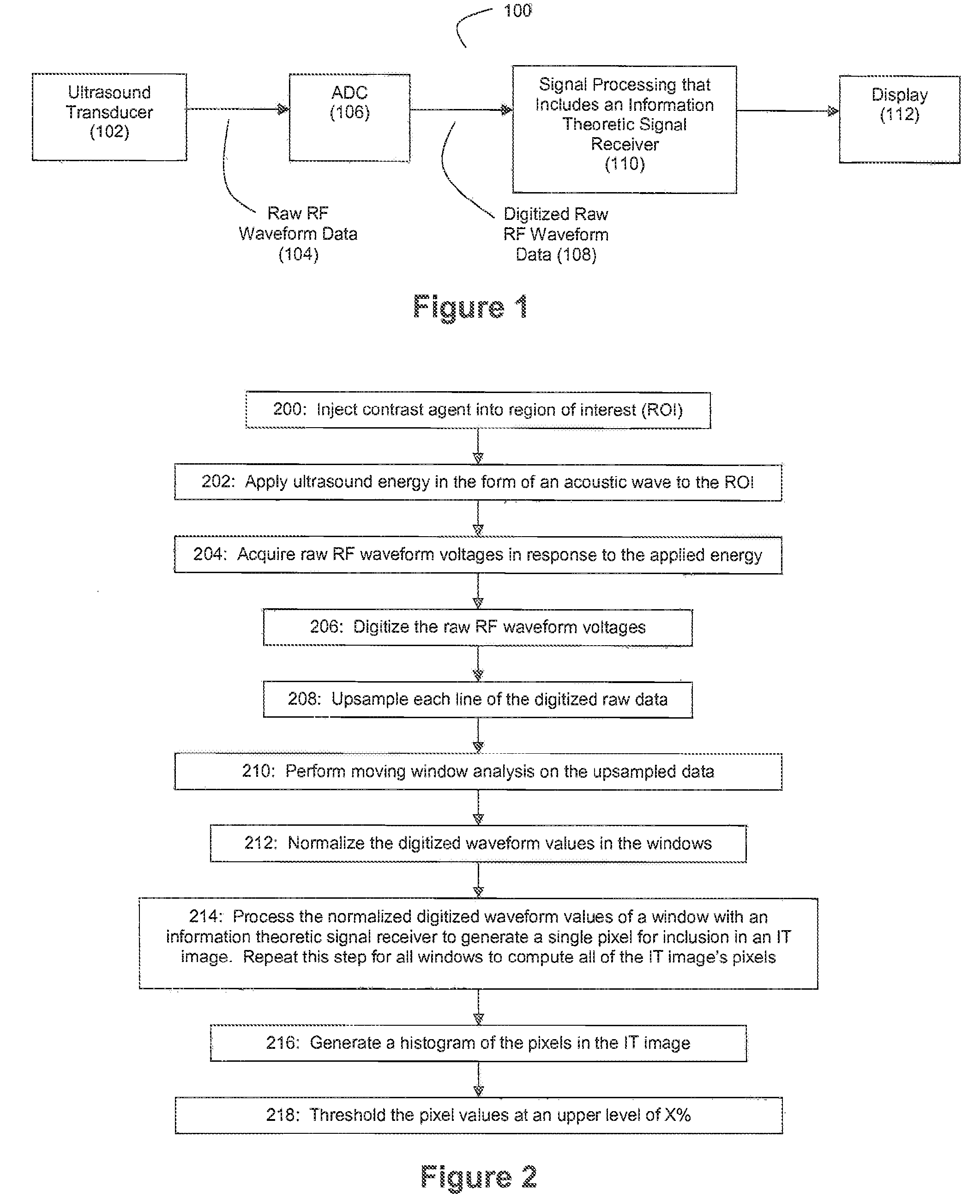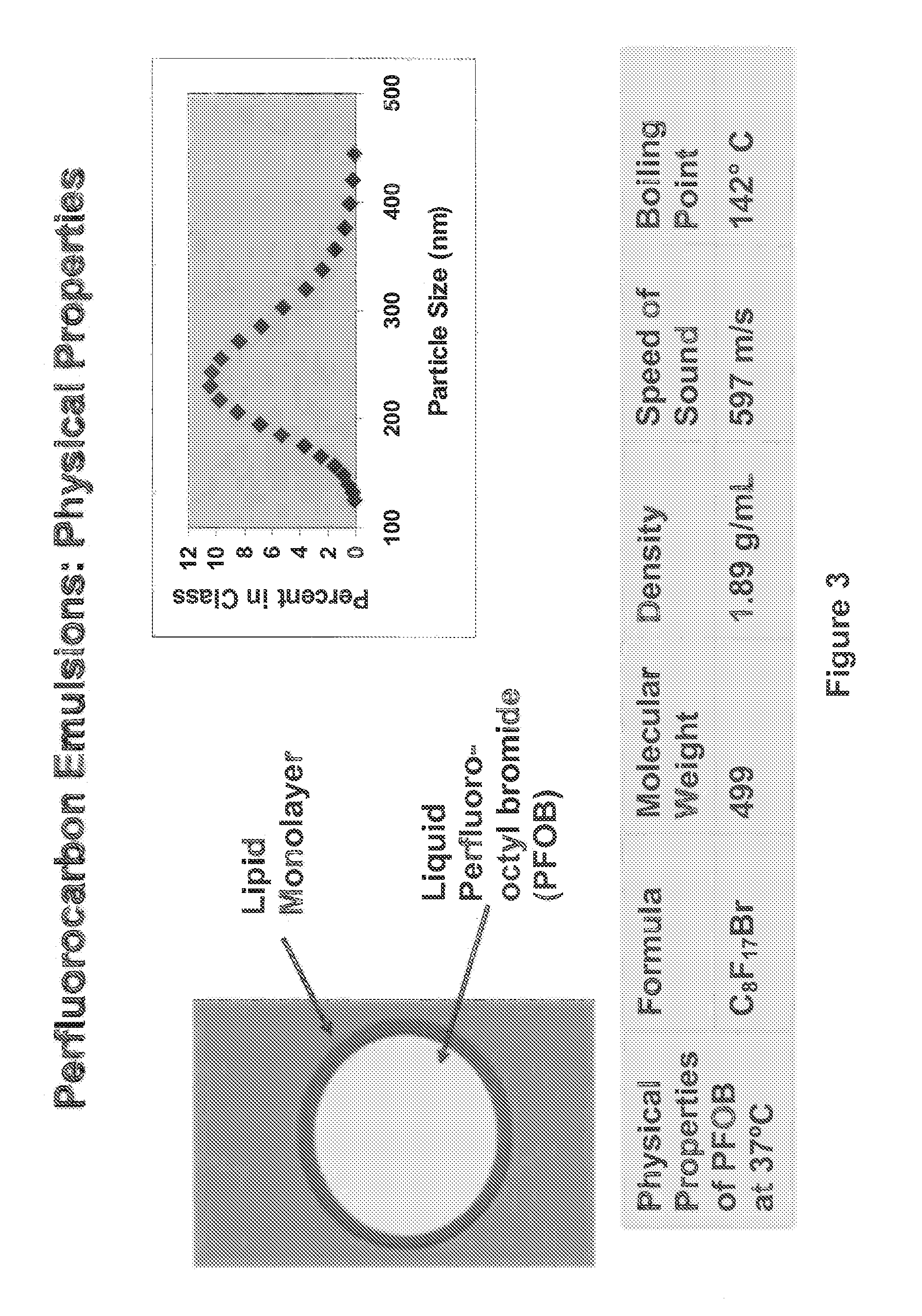Ultrasonic Characterization of Internal Body Conditions Using Information Theoretic Signal Receivers
a technology of information theoretic signal and internal body condition, applied in the field of medical imaging to detect and diagnose internal body conditions, can solve the problem of less sensitive detection of nanoparticles, and achieve the effect of improving the available medical imaging modalities
- Summary
- Abstract
- Description
- Claims
- Application Information
AI Technical Summary
Benefits of technology
Problems solved by technology
Method used
Image
Examples
Embodiment Construction
[0032]FIG. 1 depicts an exemplary overview of an imaging system 100 capable of implementing the present invention. Preferably, the imaging system 100 is an ultrasound imaging system. However, other imaging modalities may be used in the practice of the present invention, including but not limited to magnetic resonance imaging and nuclear imaging. However, as set forth herein, the inventors believe that the present invention is particularly amenable to implementation with ultrasound imaging, both in vivo and in vitro. Additionally, the techniques of the present invention can be applied to areas such as intravascular imaging, transesophageal imaging, and acousto-optic imaging.
[0033]An ultrasound transducer 102 operates to apply an acoustic signal to a region of interest (ROI) and receive acoustic reflections that are transformed into raw RF waveform data 104 that is representative of the interaction of the acoustic signal with the ROI. This raw RF waveform data 104 is then processed th...
PUM
 Login to View More
Login to View More Abstract
Description
Claims
Application Information
 Login to View More
Login to View More - R&D
- Intellectual Property
- Life Sciences
- Materials
- Tech Scout
- Unparalleled Data Quality
- Higher Quality Content
- 60% Fewer Hallucinations
Browse by: Latest US Patents, China's latest patents, Technical Efficacy Thesaurus, Application Domain, Technology Topic, Popular Technical Reports.
© 2025 PatSnap. All rights reserved.Legal|Privacy policy|Modern Slavery Act Transparency Statement|Sitemap|About US| Contact US: help@patsnap.com



